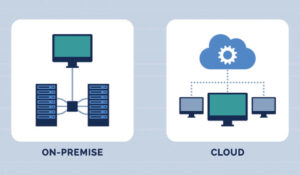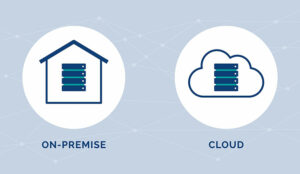Why Choose the Cloud for Deploying New Contact Centre Functionality?
Nearly three-quarters of contact centres now use the cloud in some form, according to ContactBabel’s Inner Circle Guide, sponsored by Enghouse Interactive.
Many now choose the cloud for different reasons than simply reducing costs and improving efficiency. Instead, they are increasingly migrating to the cloud. This is because the Cloud allows them to add new functionality and solutions quickly, easily, and flexibly.
What Cloud-Based Solutions are Contact Centres Using?
ContactBabel questioned contact centres about the solutions they are now deploying via the cloud, demonstrating the breadth of functionality now being used:
Call Routing:
Two-thirds (66%) of the ContactBabel survey respondents are using cloud-based call routing, with a further 23% expecting to deploy it over the next two years.
Call Recording:
The penetration rate of cloud-based call recording deployments has almost tripled since 2015 to 64% of contact centres.
This growth is due to the wide adoption of call recording, along with the need to add speech analytics capabilities to gain better insight from recordings.
IVR/Speech Recognition:
Cloud-based IVR/speech recognition has more than doubled since 2015. 61% of survey respondents have now adopted cloud deployment models.
This growth is driven by smaller contact centres relying on the cloud for voice self-service but with signs that larger players are also moving solutions to the cloud over time.
CRM/Agent Desktop:
Cloud-based CRM deployments grew strongly between 2017 and 2019 and now 57% of contact centres rely on them.
Showing future growth, just 11% of contact centres expect that their CRM systems will not be cloud-based by 2023.
Interaction Analytics:
While the growth of interaction analytics has been quite gradual, ContactBabel’s survey suggests a clear move to the cloud in the past two years, with a 22% growth, meaning that 57% of contact centres are now using it.
Artificial Intelligence:
Use of AI in the cloud is on the increase, allowing contact centres to store and analyse vast amounts of data without expensive hardware and maintenance.
Applications include AI-enabled natural language recognition (to improve voice self-service), AI assisted service (to quickly find relevant knowledge for agents) as well as sifting through data to suggest improvements to the customer journey.
How Quickly Can You Access New Cloud Contact Centre Functionality?
A new on-premise solution can take over a year to deploy from initial requirements, scoping through to implementation and go-live.
With the cloud, deployment is faster. There are fewer delays while companies purchase hardware, upscale teams, and roll-out software on physical servers and PCs.
According to ContactBabel, this means deploying a cloud solution will take around half as long on average as an equivalent on-premise project.
However, to be successful it is important to follow key best practices:
- Work closely with key stakeholders. Provide a realistic business case for the cloud. Ensure you engage business stakeholders, contact centre operations and end-users right from the start.
- Be clear on the integrations you have within your current solution. Make sure your solution provider can deliver these effectively and at a reasonable cost.
- Rather than a single large go-live consider a series of mini-launches. Plan the service transition well in advance and test systems often and early.
- Don’t feel forced to replicate current on-premises capabilities. Instead, use the cloud migration as a business transformation project. The cloud provides the opportunity to create a system that meets future business needs.
- Investigate the support offered by solution providers such as pre-built integration, vertical specific knowledge, and pre-built migration toolkits. Learn from what’s worked before with other businesses.
Look to the Future with Your Cloud Infrastructure
Customer service is changing rapidly. This means companies must be able to extend their technology to meet new requirements.
Therefore, pick the right technology provider that can support you over the long-term. Look for a provider that can demonstrate:
- A full range of solutions to cover current and future functionality and needs
- Practical experience of successfully rolling out these solutions in the cloud
- A full roadmap of new developments around areas such as AI and emerging technology
- Expertise to help you analyse and understand your needs now and going forward
Cloud Contact Centre Functionality
As businesses increasingly realise, the cloud provides far more than a short-term way of reducing costs. It has the power and potential to open up completely new possibilities for contact centres and to contribute to their success over the long term.
That means it’s essential to understand how it can help you today, and how it will allow you to evolve as your needs change.
This blog post has been re-published by kind permission of Enghouse Interactive – View the Original Article
For more information about Enghouse Interactive - visit the Enghouse Interactive Website
Call Centre Helper is not responsible for the content of these guest blog posts. The opinions expressed in this article are those of the author, and do not necessarily reflect those of Call Centre Helper.
Author: Enghouse Interactive
Published On: 25th Nov 2022
Read more about - Guest Blogs, Enghouse Interactive






 Enghouse Interactive delivers technology and expertise to help bring your customers closer to your business through its wide range of customer contact solutions.
Enghouse Interactive delivers technology and expertise to help bring your customers closer to your business through its wide range of customer contact solutions. 








